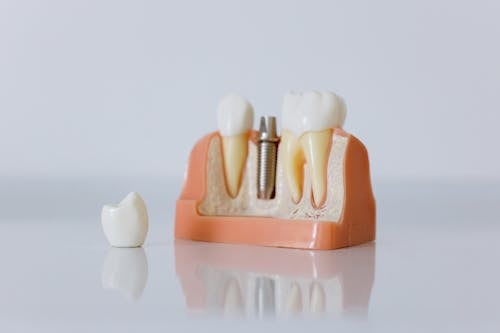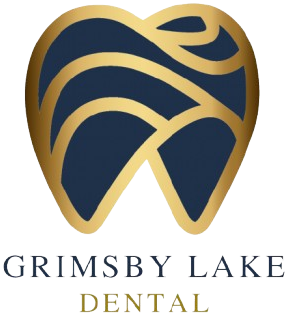Bridges and Dentures
When dealing with missing teeth, dental bridges and dentures are common restorative options. Here’s a breakdown of each:
Dental Bridges
1- What they are
- A dental bridge is a fixed prosthetic device used to replace one or more missing teeth.
- It “bridges” the gap created by missing teeth.
- It consists of artificial teeth (pontics) that are anchored to the adjacent natural teeth (abutment teeth) or dental implants.
2- Types of Bridges
- Traditional bridges: The most common type, involving crowns placed on the abutment teeth with a pontic in between.
- Cantilever bridges: Used when there’s only one adjacent tooth to support the bridge.
- Implant-supported bridges: Used when there are implants that support the bridge.
3- Benefits
- Restores the ability to chew and speak properly.
- Maintains the shape of the face.
- Prevents remaining teeth from shifting.
- Restores a natural-looking smile.
4- Considerations
- Requires preparation of the abutment teeth.
- May require more rigorous oral hygiene.
- The longevity of a bridge depends on proper care.
Dentures
1- What they are
- Dentures are removable prosthetic devices that replace missing teeth and surrounding tissues.
- They can be full or partial.
- Full dentures replace all teeth in an upper or lower arch.
- Partial dentures replace some missing teeth and are supported by remaining natural teeth.
2- Types of Dentures
- Full dentures: Replace all of the upper or lower teeth.
- Partial dentures: Replace some of the teeth, and are held in place by clasps that attach to the remaining natural teeth.
- Implant-supported dentures: Dentures that are anchored to dental implants for increased stability.
3- Benefits
- Restores the ability to chew and speak.
- Improves facial support.
- Can enhance appearance.
- Generally a less costly option than full implant procedures.
4- Considerations
- May require an adjustment period.
- Can affect taste and sensation.
- Requires daily cleaning and removal.
- Bone loss can still occur.
- May require periodic relining or replacement.
Key Differences
- Fixed vs. Removable: Bridges are fixed, while dentures are removable.
- Tooth Replacement: Bridges replace a few missing teeth in a row, while dentures can replace all or multiple missing teeth.
- Supporting Structures: Bridges rely on adjacent teeth or implants for support, while dentures rest on the gums or are supported by implants.
Which Option Is Right for You?
The best option depends on individual needs and circumstances. Factors to consider include:
- Number of missing teeth.
- Condition of remaining teeth.
- Jawbone health.
- Personal preferences.
- Cost
It’s essential to consult with a dentist at Grimsby Lake Dental to determine the most suitable tooth replacement option. We can assess your oral health and recommend the best course of action.

Follow Grimsby Lake Dental on Instagram
